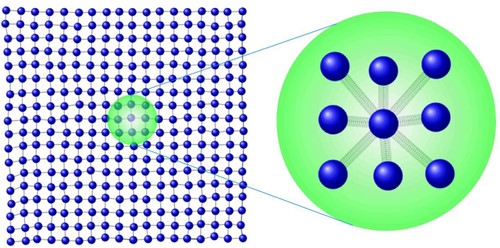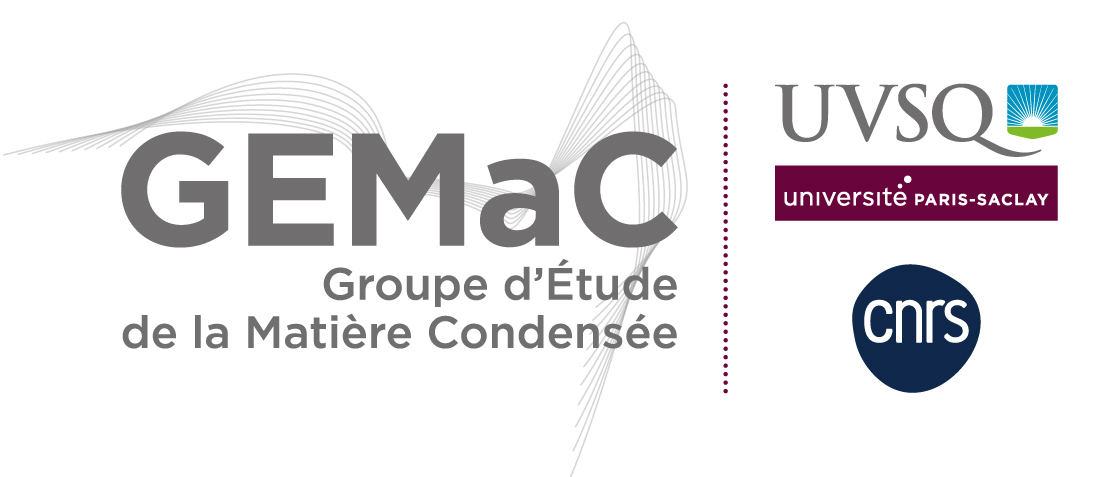You are here : GEMACENHighlights
- Partager cette page :
- PDF version
A new theoretical approach reveals the emergence of complex self-organised structures in spin crossover materials
Researchers from GEMaC laboratory have developed an effective electro-elastic model to simulate phase transitions in spin crossover crystals. The resolution of this model is 50 times faster than the traditionally used model, which has allowed them to reveal a wide variety of complex phenomena.
Spin crossover crystals are materials whose spin state can be modified by an external constraint (temperature, illumination, magnetic field, electric field...). Moreover, the change in spin state is associated with a change in volume. This interaction between the electronic state (the spin state) and the elastic mechanical state (the crystal deformation) can then give rise to a wide range of complex behaviours during their phase transitions. Their properties make them interesting for many fields: optics, spintronics, magnetism, displays, sensing, etc. and could lead to the realisation of compact high density memories.
These materials are usually described by electro-elastic models. As the name implies, these models combine a description of the electronic state and the elastic mechanical state at the microscopic scale. These models can then in principle be used to describe the state of a crystal on a larger scale. However, in practice, the use of such models is limited to very small crystals since the cost in simulation time quickly becomes prohibitive as the crystal size increases.
By taking advantage of the separation of two time scales (spin and elasticity), the GEMaC researchers have developed a new model, the homogeneous electro-elastic model. This is a so-called "effective" approach because the elastic phenomena are taken into account in a mean-field model where the deformation is spread over the entire crystal lattice, thus with long-range interactions. The mechanical relaxation thus becomes analytically solvable. The formalism obtained is then analogous to that of a well-known model in magnetism: the Ising model. The latter makes it possible to describe a large number of magnetic phenomena based on the interaction between neighbouring sites. However, in the case of the homogeneous electro-elastic model, the interactions between neighbouring sites are elastic and not magnetic. This new model has accelerated the calculations by almost two orders of magnitude!
Thanks to this important acceleration, the researchers were able to show that the considered spin-crossover crystals involved a competition between short-range antiferromagnetic and long-range ferromagnetic interactions. These antagonistic interactions are at the origin of lattice frustration phenomena, which lead to the emergence of complex self-organised spin structures when the temperature varies. Thus, the authors revealed antiferromagnetic intermediate states that exhibit microscopic structures in the form of chessboards or stripes, depending on the predominant direction of the interactions. The intermediate states can under certain circumstances survive down to 0 K. The phase diagram shows a bifurcation, a well-known signature of complex dynamical systems.
Moreover, the competition of axial and diagonal interactions between nearest neighbours - adding frustration to frustration - gives rise to the observation of phenomena mixing disorder, fluctuations and complexity leading to the appearance of multiple plateaus at the transition, networks of islands, labyrinths... The states of the system are then extremely diverse and highly degenerate. This work, published in the Journal of Applied Physics, paves the way for the exploration of new phases of matter in molecular materials, where longer-range interactions could lead to increasingly complex structures and the emergence of unsuspected non-linear phenomena, such as dissipative structures. Understanding these phenomena may pave the way for the realisation of new, extremely miniaturised devices, such as high-density memories.


Figure: top, example of a 2D spin-crossover lattice, and zoom on a site interacting with its nearest neighbours.
Bottom, example of thermal cycling revealing two "ferromagnetic" states (at high and low temperatures) and an intermediate "antiferromagnetic" state.
Reference:
M. Ndiaye, Y. Singh, H. Fourati, M. Sy, B. Lo, K. Boukheddaden,
"Isomorphism between the electro-elastic modeling of the spin transition and Ising-like model with competing interactions: Elastic generation of self-organized spin states",
Journal of Applied Physics 129, 153901 (2021)
Contact :
Kamel Boukheddaden





